
Which are the best phones in 2025? And what factors should you consider before making a purchase? Here in this article, you’ll find all the useful info and our best phone picks for 2025. Before heading to our top picks and buying guides, let’s have a glance at the history, trends, and types of smartphones in general.
Best Phone in Nepal 2025 Overview
History of Mobile Phones
Mobile phones have been a boon for the present-day world. But where did it begin from? If we turn some pages back in history, the first mobile phone (prototype) was demonstrated by Martin Cooper of Motorola back in 1973. It weighed around 2 kg. Meanwhile, Nippon Telegraph and Telephone in 1979 became the first company to launch the first commercial automated cellular network analog (1G). The technology continued to spread across Denmark, Finland, Norway and Sweden.
Meanwhile, the year of 1983 stood as a prominent year with DynaTAC 8000x available commercially as the first handheld mobile phone. Then in 1991, the 2G network arrived in Finland on the GSM standard. Since then, the number of mobile phone users has gone uphill with further technological advancements.
What is a Smartphone?
A smartphone is basically a mobile phone with smart functionalities. In the initial days, mobile phones were limited to making calls and texting. With the ever-changing times, mobile phones have gotten really smart. The ability to surf the internet, click photos, take video calls, send documents and such are super easy tasks for a modern-day mobile phone, which is popularly known as a smartphone. From keypad phones to QWERTY keyboard phones to touch screen phones to a full-fledged smartphone, the trend has been now all about smartphones.
Besides capable hardware like a processor, camera, display, and battery, software plays an important role for a smartphone. In the present day, the smartphone market is dominated by Android and iOS software.
The Trend of Smartphones in Nepal
Smartphones have become more or less a basic need for humans. In the early 2000s, the mobile phone market was all about keypad phones. Which rose to pin touch phones in the mid-2000s and then, the touch smartphones after 2010.
At the present time, mobile phone access has reached 73.2% of the general public in Nepal, as per the full report of the National Census of 2022. The report also mentions that 73% of the population uses a smartphone. The age-old landline telephone is now owned by 4.5% only. This shows how the market has been all about smartphones these days.
Besides taking a simple phone call, these modern-day phones offer the world on your screen, technically. You just need an internet connection and a smartphone, you can do a whole lot of things. Plus, social media, esports gaming, friends circle, and other factors have increased the demand for smartphones by a big margin in recent years.
Things to know before buying a smartphone
SoC/ Processor on smartphones
We already know that smartphones can be entry-level, midrange, premium midrange, and flagship. And the type of System on Chip is the key factor in segregating those rankings. As simple as that, entry-level phones carry an entry-level chip and it goes so on. In the Android world, we can witness three major chipsets– Snapdragon, Mediatek, and Exynos. The former two are the most popular ones and can be found across all major Android smartphone brands.
Meanwhile, the Exynos chip is Samsung’s in-house product, so it is obviously found in Samsung phones.
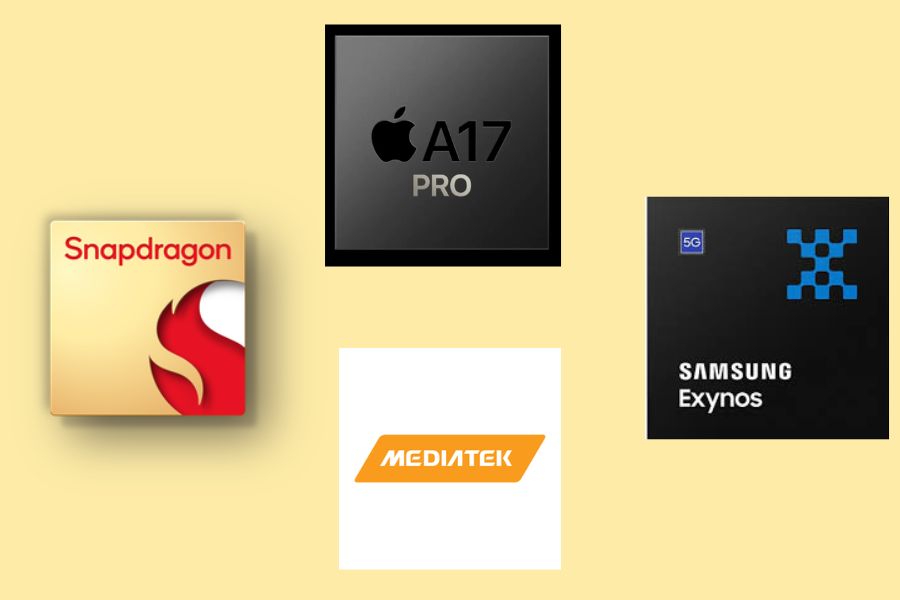
Just a few years ago, Snapdragon was the king in the midrange and flagship arena but the Taiwanese chip maker, Mediatek has become extremely popular, beating the American company, in the midrange segment. Also in the flagship section, Mediatek’s popularity is rising with the latest Mediatek Dimensity 9000 Series.
And for the iPhones, it is the Apple A-Series Bionic chips. These chips are known to be more optimized and powerful than their Qualcomm and Mediatek counterparts. But both competitors are also now slowly catching up with the competition against Apple.
How to choose the right processor
Lying at the core of a smartphone is a processor. It provides all the computing power and juice for your device. So, choosing the right chipset is also very important. If you are a techie like me, sorting the best among the bunch is never a hassle. But if you are a newbie or someone who’s unaware of smartphone chipsets, fear not, you can always take the help of Google.
- First up, check the processor of the phone you are buying.
- Then, you can check the Antutu and Geekbench benchmark scores of the chip on the web.
- The higher the CPU and GPU score, the better the processor is.
- On the same side, you can compare other chipsets in the range, in this way, you can know the best-performing chip for the price.
LCD or AMOLED panel?
Smartphones in general use two types of display: LCD and AMOLED. Liquid Crystal Display (LCD) is found usually in the budget range of devices and also in the midrange segment. On the other hand, Active Matrix Organic Light Emitting Diode (AMOLED) panels are found in the midrange, premium midrange, and flagship smartphones, due to their superior picture quality, contrast, and deeper blacks.
So, if you are purchasing a smartphone, always look out for the AMOLED options for a much better display experience. If budget is your constraint, you can also opt for an LCD panel but make sure, it is an IPS LCD, which has better viewing angles than the subpar TFT LCD displays with rubbish viewing angles.
60Hz or 120Hz display?
In recent years, 120Hz fast-motion rate displays have become extremely common. It provides a superfluid scrolling experience than a 60Hz panel, but it consumes a bit more battery. But once you have used a 120Hz panel, there is no way going back to a 60Hz one, because, the fun and overall fluidity will never be the same on a static 60Hz panel.
So, despite the 120Hz consumes more battery, always opt for a smartphone with a 120Hz or at least 90Hz display. You can always switch to the 60Hz motion rate on those smartphones, anyway.
How much RAM should you get?
Smartphones currently come with 4GB, 6GB, 8GB, 16GB, and 24GB RAM. Some might also come with 2GB or 3GB of RAM in the entry-level segment. And, choosing the appropriate amount of RAM comes to your usage habits and needs. If you are a basic user, who just uses the phone casually for social media, YouTube, and such, 4GB RAM should be enough for a very basic user.
But if you do multitasking and some gaming as well, 6GB RAM is at least needed while 8GB becomes the norm for the midrange phones. Meanwhile, for flagship devices, 12/16GB RAM is recommended.
The virtual RAM gimmick…
The primary jargon in a local market for selling a smartphone is RAM. But phone companies are marketing their phones with 24GB* RAM, 16*GB RAM, and so on. But, you should always notice the asterisk symbol right there. It is not the actual RAM of the phone, but a combined one with virtual RAM included. For example, the phone has 8GB of physical RAM while the other 8GB is an extended RAM. Virtual RAM is not that useful, and I’d call it more of a gimmick.
Do not fall for MegaPixels trap
While buying a new mobile phone, a bigger megapixel camera might look enticing. But in the actual world, megapixels do not matter that much. A phone might have a 108MP camera but the usual shots are always taken in a pixel-binned 12MP format. You also get a dedicated 108MP or high-res mode, but the results are not drastically different. So, megapixels should not be a major factor here.
So, instead of looking for higher megapixels, look for sensor, ISP, and phone’s overall processing for photos. Sometimes despite having capable hardware, bad processing can ruin the fun. That’s why a 12MP camera can get you better photos than a 108MP one if the software and hardware processing are done right.
OIS in cameras
Another factor you have to look for in a smartphone camera is Optical Image Stabilization (OIS). Phones having OIS can physically move the camera sensor to minimize shakes and jitters. As a result, you can get good stills. Meanwhile in the videos section, having OIS becomes a major perk, resulting in smooth and stable shots. But OIS should be enabled by smartphone manufacturers in this section.
If the smartphone doesn’t have OIS, at least, look for Electronic Image Stabilization (EIS) which has nothing to do with photos, but it can provide a decent quality of stabilization for videos.
Top Smartphone brands in Nepal
The Nepalese smartphone market is dominated by three players— Xiaomi, Samsung, and Vivo. The top-dog Xiaomi is arguably the most popular in the market, thanks to its Redmi Note and Redmi Number Series phones. Offering a good overall valued spec at competitive pricing has been the significant reason for the popularity of Xiaomi/Redmi phones in Nepal.
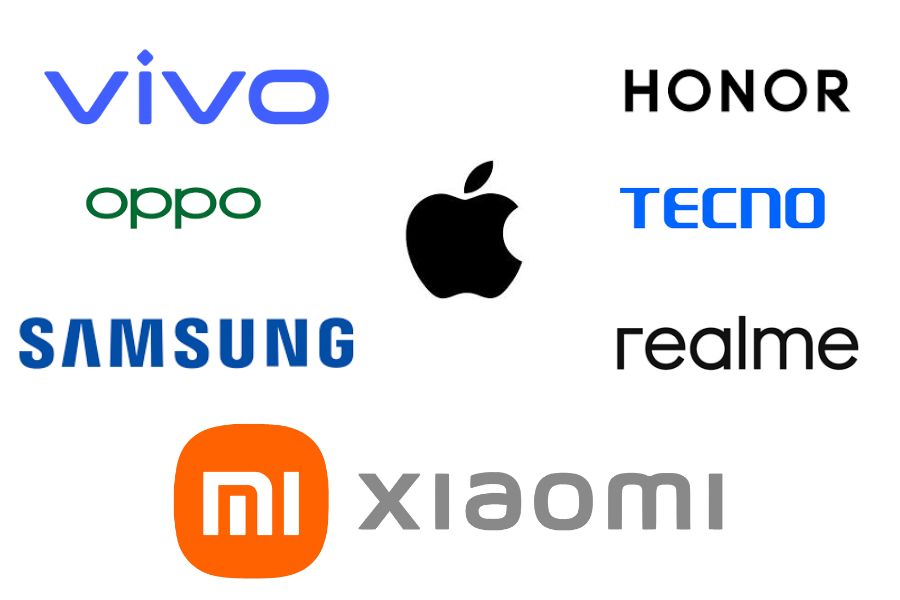
Likewise, Samsung is a veteran player in the smartphone world. Its brand name and trust carry quite a big value for its user base in Nepal. Especially, the midrange and flagship Galaxy lineup of phones are widely popular here. In the meantime, Vivo has also grown with its Y and V series of smartphones in recent days.
Besides these brands, Oppo, OnePlus, Honor, Realme, and Tecno also have a good amount of presence and popularity in the market.
Why buy a new phone or a second-hand phone?
A new phone is for someone who’s always looking for the latest new tech and stuff. New phones come equipped with the latest processors, software, camera, and design. Plus, the feeling of getting something new is always refreshing, isn’t it?
But, buying a second phone cannot be ruled out too. You can get flagship phones from the last generation at cheaper prices, which also makes a great deal. In fact, many people opt to buy second hand iPhone too. So basically, it all comes down to your choice and preferences.
Where to buy smartphones at the best price in Nepal?
As always, you should get a smartphone from authorized stores and genuine sellers like Hukut. It will reflect a lot on after-sales support and genuineness. However, you can also buy phones at a cheaper price rate through gray channels but do note, that there might be MDMS compatibility issues in the near future and you’ll miss out on after-sales support and warranty. Meanwhile, you can browse through a plethora of smartphones on Gadgetbyte with their buying links, to make it easy. Always make sure of the product and buying place, before making a purchase.
How much to spend on a smartphone in Nepal?
Well, the answer depends on your budget and needs. If you are a very basic user or want to buy a smartphone for your parents for the sake of a smartphone experience, you can opt for the budget segment. But if you are someone who wants a decent camera and usage experience, the midrange segment is where you should go. You can find dozens of options here. So, make sure to compare your choices and choose the best that suits your needs and budget. Or, you can stretch your budget for a premium midrange smartphone or even a flagship phone. It all comes down to your preference, choice, and budget.
Best Phones in 2025 [Our Top Picks]
Best Phone in Nepal under 20,000
The 20,000 category is basically for those guys who are looking for a mid-range smartphone experience with a moderate level of power, light gaming, and multimedia consumption. So you get just the average amount of performance and a fairly decent camera in this range. And, here are our current best picks for phones under 20,000 in Nepal.
2. HMD Crest
The HMD Crest stands as one of the best smartphone you can buy in Nepal under 20,000 rupees. It features a 6.67-inch FHD+ AMOLED display with a 90Hz refresh rate, offering superior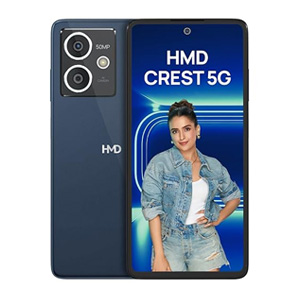 quality compared to most other phones in this price range, which typically come with LCD screens. Powered by the Unisoc T670 5G chipset, paired with 6GB RAM and 128GB of storage, the HMD Crest delivers solid performance. Its clean Android 14 experience is free of bloatware, making the software smooth and user-friendly. The phone’s modern design, featuring flat edges and a hole-punch cutout, adds a premium touch to its overall build.
quality compared to most other phones in this price range, which typically come with LCD screens. Powered by the Unisoc T670 5G chipset, paired with 6GB RAM and 128GB of storage, the HMD Crest delivers solid performance. Its clean Android 14 experience is free of bloatware, making the software smooth and user-friendly. The phone’s modern design, featuring flat edges and a hole-punch cutout, adds a premium touch to its overall build.
Battery life is another strong point, with its large 5,000 mAh battery easily lasting a full day and a half with average usage. The included 33W PD charger ensures fast charging, a feature that is often missing in midrange phones. The camera setup, with a 50MP main sensor and a 50MP selfie camera, performs adequately for its class, especially for social media use. At just 19,000 rupees, the HMD Crest provides unbeatable value with a combination of a great display, smooth performance, long-lasting battery, and modern design, making it the best option in its category.
- Design: Monotone design, flat frames, 2.5D curved edges, IP52-rated
- Display: 6.67” OLED Panel, 90Hz, 20:9 aspect ratio
- Resolution: FHD+ (1,080 x 2,400)
- Chipset: Octa-core UNISOC T760 (6nm)
- RAM: 6GB + 8GB extendable
- ROM: 128GB + 256GB expandable with MicroSD card
- OS: Android 14
- Rear Camera: Dual Camera (50MP Primary + 2MP Depth Sensor)
- Front Camera: 50MP Camera (Centre-aligned hole-punch cutout)
- Security: Side-mounted fingerprint sensor, Face Unlock
- Sensors: Accelerometer (G-sensor), Ambient Light, E-compass, Gyroscope
- Navigation: GPS, A-GPS, Galileo
- Battery: 5,000 mAh cell with 33W fast charging
- Connectivity: Dual SIM, 5G, WiFi 5, Hotspot, Bluetooth v5.0, USB Type-C, 3.5mm headphone jack
- Colour Options: Blue (Crest), Green (Crest Max), Purple, Red
- Price: NPR 19,000
1. Redmi 13 4G

The newly launched Redmi 13 4G takes the second spot on our list of best phones under NPR 20000 in Nepal. It’s the successor to the Redmi 12 (which also makes a cameo on our list), and it brings a couple of upgrades here and there. Although there are some disappointing downgrades too.
Most notably in terms of cameras because while Xiaomi has swapped that 50MP main camera for a 108MP one here, the Redmi 13 4G gets rid of the useful ultrawide shooter for some reason. But when we tested them both, we found that the new 108MP sensor performs significantly better. Whereas it now has a 13MP selfie camera instead of an 8MP one as well.
HyperOS ftw
Getting to performance, the Redmi 13 4G enjoys MediaTek’s new “Helio G91 Ultra” chip. Having said that, this is nothing but a rebranded Helio G88 found on the Redmi 12. The good news, at least, is that it boots on Android 14-based HyperOS right out of the box.
Other than all this, the Redmi 13 4G has an identical 6.79-inch IPS display with a 90Hz refresh rate. This one is also protected by Corning’s Gorilla Glass, but Xiaomi hasn’t clarified exactly which generation of Gorilla Glass has been used here. Then there are a few upgrades in terms of both battery capacity and charging speed as well.
Redmi 13 4G Specifications:
- Display: 6.79-inch IPS LCD screen, FHD+, 90Hz refresh rate
- Chipset: MediaTek Helio G91-Ultra 4G (12nm mobile platform)
- Memory: 6/8GB LPDDR4X RAM, 128/256GB eMMC 5.1 storage (expandable)
- Software & UI: HyperOS 1.0 on top of Android 14
- Rear Camera: Dual (108MP primary, 2MP macro)
- Front Camera: 13MP sensor (hole-punch)
- Security: Fingerprint sensor (side-mounted)
- Connectivity: Dual-SIM (Nano), WiFi 5 (Dual-band), Bluetooth 5.4, GPS / AGPS / Glonass / Beidou, USB-C, 4G LTE
- Sensors: Accelerometer, Ambient light, E-compass, Virtual proximity
- Battery: 5030mAh with 33W charging (33W adapter inside the box)
- Price in Nepal: NPR 18,999 (6/128GB) | NPR 21,999* (8/256GB)
- Buy Redmi 13 4G here
Best Phones Under 30,000 in Nepal
3. CMF Phone 1

The CMF Phone 1 bags the third spot in our best phones under 30,000 in Nepal list. It is, by the way, the first smartphone from Nothing’s subbrand. The UK-based company is all about its unique design approach and the first phone from CMF definitely doesn’t miss on this side. It features a removable back panel with a rotating dial on the bottom and a screw.
Apart from that, it brings a 6.7-inch FHD+ screen with a 120Hz refresh rate, 2000 nits peak brightness, and an HDR 10+ certification. Running the things on the core will be a Dimensity 7300 SoC, built on a 4nm architecture. It scores 673,000 on Antutu. Memory-wise, it’s paired with 8GB of RAM and up to 256GB of internal storage.
CMF Phone 1 Specifications
- Display: 6.67-inch AMOLED screen, FHD+, 120Hz refresh rate
- Chipset: MediaTek Dimensity 7300 5G (4nm mobile platform)
- Memory: 8GB RAM, 128/256GB storage (expandable)
- Software & UI: Nothing OS 2.6 on top of Android 14
- Rear Camera: Dual (50MP main, 2MP depth)
- Front Camera: 16MP sensor (hole-punch)
- Security: Fingerprint sensor (optical in-display)
- Connectivity: Hybrid Dual-SIM (Nano), WiFi 6 (dual-band), Bluetooth 5.3, GPS / A-GPS / Glonass / Galileo / BDS / QZSS, USB-C, 4G LTE, 5G
- Sensors: Accelerometer, Ambient light, E-compass, Proximity
- Battery: 5000mAh with 33W charging (power adapter not provided)
- Price in Nepal: NPR 29,999 (8/128GB) | NPR 34,499 (8/256GB)
- Buy CMF Phone 1 here with Dashain discounts
2. Galaxy A16 5G
The Samsung Galaxy A16 5G is undoubtedly one of the best budget phones under 30,000 Rupees, offering a solid balance of design, performance, and features. The display is impressive, with a 6.7″ SUPER AMOLED screen and vibrant color reproduction. The camera setup is another highlight, delivering excellent photos with good color accuracy and dynamic range, making it one of the best budget camera phones currently available. With a long-lasting 5000mAh battery and 6 years of software updates, this phone promises great longevity and value for money.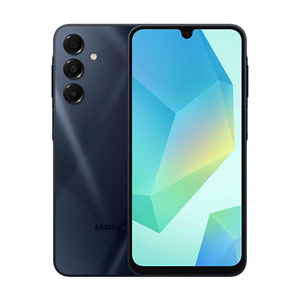
However, while the A16 5G excels in many areas, it does have its drawbacks, particularly in gaming performance, as the MediaTek Dimensity 6300 chipset struggles to handle more demanding games smoothly. The lack of stereo speakers and no 4K video recording may also be a disappointment for some users. Nonetheless, considering its overall package—design, camera quality, display, and long-term software support—the A16 5G is a solid choice for anyone looking for a reliable, affordable phone under 30,000 Rupees.
Specifications
- Display: 6.7″ SUPER AMOLED screen, 90Hz
- Resolution: FHD+, 2408 x 1080 pixels
- CPU: MediaTek Dimensity 6300, 6nm processor
- Storage: 6/8GB RAM, 128/256GB (expandable using microSD card)
- Rear Camera: Triple (50MP primary, 5MP Ultrawide, 2MP macro)
- Front Camera: 13MP (notch)
- Security: Physical fingerprint scanner (side-mounted)
- Battery: 5000mAh with 25W fast charging (Free 25W charger)
- Buy Galaxy A16 here!
1. Redmi Note 14 [4G+5G]
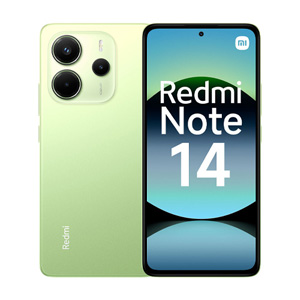
The Redmi Note 14 is hands down one of the best phones you can buy in Nepal around the 30k price range. Offering great value, the Note 14 5G comes equipped with a vibrant 6.67-inch display with a 120Hz refresh rate, making it excellent for media consumption and gaming. The Dimensity 7025 Ultra chipset, paired with 5G support, ensures smooth performance for day-to-day tasks and casual gaming. Additionally, the 108MP primary camera with OIS on the 5G variant captures detailed photos, especially in challenging lighting conditions, while the improved battery life and faster charging make it even more practical for everyday use.
At NPR 31,000, the Redmi Note 14 5G offers an impressive feature set that is hard to beat in this price range, with a better display, faster charging, improved camera performance, and the added benefit of 5G support. While the 4G version at NPR 25,000 is also a solid option, the extra features in the 5G version make it the clear winner for those willing to spend a bit more. Whether you’re after a phone with a stunning display, decent performance, or reliable battery life, the Redmi Note 14 is one of the best choices under 30k in Nepal.
Specifications
| Feature | Redmi Note 14 4G | Redmi Note 14 5G |
| Display | 6.67-inch AMOLED, FHD+ 1080 x 2400 pixels, | 6.67-inch AMOLED, FHD+ 1080 x 2400 pixels, |
| Properties | 120Hz refresh rate, Gorilla Glass 5, 1800nits (Peak) | 120Hz refresh rate, Gorilla Glass 5, 2100nits (Peak) |
| Chipset | Mediatek Helio G99 Ultra (6nm) | Mediatek Dimensity 7025 Ultra (6nm) |
| RAM | 6/8GB LPDDR4X | 8/12GB LPDDR4X |
| Storage Options | 128GB / 256GB, UFS 2.2 | 256GB / 512GB, UFS 2.2 |
| Rear Camera | 108MP main + 2MP depth + 2MP macro | 108MP main (OIS) + 8MP ultrawide + 2MP macro |
| Front Camera | 20MP | 20MP |
| Security | In-display fingerprint sensor (optical), Face Unlock | In-display fingerprint sensor (optical), Face Unlock |
| Audio | Stereo speakers with Dolby Atmos | Stereo speakers with Dolby Atmos |
| Connectivity | 4G, VoLTE, Vo-WiFi Wi-Fi 5, Bluetooth 5.3, GPS, USB-C port, 3.5mm headphone jack | 4G, VoLTE, Vo-WiFi Wi-Fi 5, Bluetooth 5.3, GPS, USB-C port, 3.5mm headphone jack |
| Battery | 5,500mAh, 33W wired charging | 5,110mAh, 45W wired charging |
| Color Options for Nepal | Lime Green, Midnight Black, Ocean Blue, Mist Purple | Midnight Black, Coral Green, Lavender Purple |
| Price in Nepal | NPR 24,999 (6/128GB), NPR 27,999 (8/256GB) | NPR 30,999 (8/256GB), NPR 34,999 (12/512GB)A |
Best Phones Under 40,000 in Nepal
2. Redmi Note 14 Pro 5G

The Redmi Note 14 Pro 5G is an impressive option under 40k, offering a well-rounded experience with strong performance, excellent camera quality, and a sleek design. It features a 6.67-inch AMOLED display with a 120Hz refresh rate, providing a vibrant and fluid visual experience. The phone is powered by the MediaTek Dimensity 7300-Ultra chipset, paired with up to 12GB of RAM, ensuring smooth multitasking and high performance for everyday tasks and gaming. Additionally, the 200MP primary camera delivers sharp, detailed shots, making it a great choice for photography enthusiasts.
For power, the Redmi Note 14 Pro 5G comes with a 5,110 mAh battery that supports 45W fast charging, ensuring quick recharges and lasting all-day performance. It is priced at NPR 39,999 for the 8GB/256GB variant, making it an excellent value in the mid-range segment. With its solid feature set, including a powerful processor, impressive camera, and fast charging, the Redmi Note 14 Pro 5G is a top contender in the under-40k range, offering premium-like features at a competitive price.
- Design and Build: 162.33 x 74.42 x 8.4 mm, 190 gm, IP68 rating
- Display: 6.67-inch AMOLED panel, 1.5K resolution, 120Hz refresh rate
- Chipset: MediaTek Dimensity 7300-Ultra (4nm mobile platform)
- Memory: 8/12GB LPDDR4X RAM, 256/512GB UFS 2.2 storage (non-expandable)
- Software & UI: Android 14 with Xiaomi HyperOS 1.0 on top
- Rear Camera: Triple (200MP primary, 8MP ultrawide, 2MP macro)
- Front Camera: 20MP sensor (hole-punch)
- Security: Fingerprint sensor (optical in-display)
- Connectivity: Dual-SIM (Nano), WiFi 6, Bluetooth 5.4, USB-C, NFC, 5G
- Sensors: Accelerometer, Ambient light, E-compass, Gyroscope, IR blaster, Proximity
- Battery: 5110 mAh with 45W fast charging (45W adapter in box)
- Price in Nepal: NPR 39,999 (8/256GB) | NPR 44,999 (12/512GB)
- Check the full specifications of Redmi Note 14 Pro 5G here
1. OnePlus Nord CE 3 5G

Squashing everyone out of the way, the OnePlus Nord CE 3 5G takes the crown as the Best Phone under NPR 40,000 in Nepal. Initially, the phone was launched at a higher price tag of NPR 53,999 but OnePlus Nepal has now provided a massive price drop. Not only the price but also the specs are very appealing. We have the Snapdragon 782G chipset which offers a tri-cluster architecture with prime Cortex-A78 cores at 2.7GHz, three Cortex-A78 cores at 2.4GHz, and four power-efficient Cortex-A55 cores at 1.8GHz. Which is way better than the Helio G99 or even the Snapdragon 6s Gen 1 SoC. On top of that, you get 12GB of RAM and 256GB of UFS 3.1 internal storage.
The optics side is also pretty sorted with a 50MP Sony IMX890 sensor which takes super decent pictures. Besides that, the 8MP Ultrawide camera is also good while the 2MP macro lens is something, we barely use on a daily basis. Moreover, you get a 5000mAh battery with 80W fast charging support. OnePlus also ships a compatible charger in the box.
Overall, the Nord CE 3 5G is a phone to beat at the 37K tag with a gorgeous 120Hz 6.7-inch AMOLED panel, a powerful chip, and really good specs.
OnePlus Nord CE 3 5G Specifications:
- Display: 6.7-inch AMOLED screen, FHD+, 120Hz refresh rate
- Chipset: Qualcomm Snapdragon 782G 5G (6nm mobile platform)
- Memory: 12GB RAM, 512GB storage (UFS 3.1)
- Software & UI: OxygenOS 13.1 on top of Android 13
- Rear Camera: Triple (50MP main OIS, 8MP ultrawide, 2MP macro)
- Front Camera: 16MP sensor (hole-punch)
- Security: Fingerprint sensor (in-display)
- Connectivity: Hybrid Dual-SIM (Nano), WiFi 5 (dual-band), Bluetooth 5.2, GPS / AGPS / Glonass / Galileo / Beidou, NFC, USB-C, 4G LTE, 5G
- Sensors: Accelerometer, Ambient light, Compass, Gravity, Gyroscope, Proximity
- Battery: 5000mAh with 80W charging (80W adapter inside the box)
- Price in Nepal: NPR 38,499 (12/256GB)
- Buy OnePlus Nord CE 3 with Dashain discounts!
Best Phones Under 50,000 in Nepal
The phones under the 50K segment bring more power in terms of CPU and GPU and better cameras. The design side of things is also well taken care of and hence, you can find premium-looking phones here. Here are our current best phones under 50,000 in Nepal.
2. Nothing Phone 3(a)
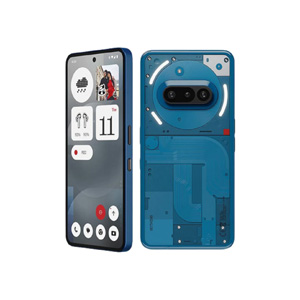
Nothing Phone 3(a) is the recent upgrade to the 2(a) by the British company, which now features a revamped camera setup featuring three cameras, including a telephoto camera. The device also features Snapdragon 7s Gen 3 instead of a Mediatek chipset. The phone is now available in Nepal and stands out as one of the best phones under 50k.
Phone 3(a) Specifications
- Display: 6.77-inch AMOLED, 120Hz, HDR10+
- Processor: Qualcomm Snapdragon 7s Gen 3
- RAM: 8GB/12GB
- Storage: 128GB/256GB
- Main Camera:
- 50MP (wide)
- 50MP (telephoto, 2x optical zoom)
- 8MP (ultrawide)
- Selfie Camera: 32MP
- Battery: 5000mAh, 50W fast charging
- Operating System: Android 15, Nothing OS 3.1
- Fingerprint sensor: Under-display (Optical)
- Audio: Stereo speakers, no 3.5mm jack
- Connectivity: Wi-Fi 6, Bluetooth 5.4, NFC, USB Type-C 2.0
1. Redmi Note 14 Pro+

The Redmi Note 14 Pro Plus stands out as one of the best phones under 50k, offering great value for money. It has a 6.67-inch 1.5K HDR OLED curved display with a 120Hz refresh rate, Dolby Vision support, and Gorilla Glass Victus 2 protection, making it an excellent choice for those who enjoy a smooth, vibrant display. The design has been refreshed, with a more centered camera module, and the phone is powered by the Snapdragon 7s Gen 3 SoC, paired with up to 16GB of RAM and 512GB of storage, running on Android 14 with HyperOS 1.0.
For photography, the Redmi Note 14 Pro Plus keeps the 200MP main sensor with OIS, delivering sharp, detailed shots. However, the 50MP telephoto lens has been replaced with a 2MP macro sensor, which may be a letdown for some users. The 20MP front camera performs well for selfies. It packs a 5110mAh battery and supports 120W fast charging, ensuring you don’t have to wait long to recharge. With dual speakers, an IR blaster, and a solid build, this phone offers a premium experience without breaking the bank, making it one of the top choices under NPR 50,000.
Redmi Note 14 Pro+ 5G Specifications:
- Design and Build: 162.53 x 74.67 x 8.75 – 8.85 mm, 205 – 210 gm, IP68 rating
- Display: 6.67-inch AMOLED panel, 1.5K resolution, 120Hz refresh rate
- Chipset: Qualcomm Snapdragon 7s Gen 3 (4nm mobile platform)
- Memory: 8/12GB LPDDR4X RAM, 256/512GB UFS 2.2 storage (non-expandable)
- Software & UI: Android 14 with Xiaomi HyperOS 1.0 on top
- Rear Camera: Triple (200MP primary, 8MP ultrawide, 2MP macro)
- Front Camera: 20MP sensor (hole-punch)
- Security: Fingerprint sensor (optical in-display)
- Connectivity: Dual-SIM (Nano), WiFi 6e, Bluetooth 5.4, USB-C, NFC, 5G
- Sensors: Accelerometer, Ambient light, E-compass, Gyroscope, Flicker, IR blaster, Proximity
- Battery: 5110 mAh with 120W fast charging (120W adapter in box)
- Price in Nepal: NPR 49,999 (8/256GB) | NPR 54,999 (12/512GB)
- Check the full specifications of Redmi Note 14 Pro+ 5G here
Buy Redmi Note 14 Pro+ 5G here
Best Premium Midrangers in Nepal
3. Honor 200 Pro

Then, we have the Honor 200 Pro taking the first spot on our best premium midrange phones in Nepal. And this is most suitable for those who value a good camera performance above everything else. The design is also premium-looking here on both devices. Although we would’ve liked it more if Honor had managed to provide some sort of IP rating and Gorilla Glass protection on the vanilla version. While the Pro version enjoys an IP65 rating at least.
So is its display. You’re looking at a 6.7-inch AMOLED screen with a 120Hz refresh rate and curves on both sides. But the biggest highlight of this display is definitely its incredible 3,840Hz PWM dimming. That means if you’re someone who gets headaches, nausea, and the like when using a phone at low brightness levels, that’s not gonna be a problem here. Plus, you get all sorts of attributes such as a 100% DCI-P3 color gamut, Low Blue Light certifications, HDR 10+ support, and so on!
Best cameras in the game
The key highlight of the Honor 200 Pro is none other than its cameras. It’s got a 50MP Sony IMX906 primary sensor which takes good images, almost similar to its expensive Honor 200 Pro sibling. And the 2.5X telephoto lens combined with the Harcourt Studio Paris filter provides you with some stellar portraits. Meanwhile, the 12MP ultrawide is also decent enough for those wider FoV imageries. It also doubles as a macro camera.
As for performance, meanwhile, the Honor 200 Pro goes for the Snapdragon 8s Gen 3 chip for flagship level performance and complemented it with plenty of RAM and storage. So you’ll have absolutely no problem with day-to-day work. The memory side of things leaves no room for complaint, this is definitely the most powerful processor for the price.
Honor 200 Specifications:
- Display: 6.7” AMOLED Panel, 120Hz refresh rate, 4,000 nits peak brightness, 435 PPI pixel density, 1.07 billion color depth, 100% DCI-P3 color gamut, 3,840Hz PWM dimming
- Resolution: FHD+ (1,200 x 2,664)
- Chipset: Octa-core Qualcomm Snapdragon 8s Gen 3 (4nm)
- RAM: 12GB
- ROM: 256GB or 512GB (Honor 200), 512GB (Honor 200 Pro)
- OS & UI: Android 14 with MagicOS 8.0 top
- Rear Camera:
- Primary: 50MP sensor, OIS
- Telephoto: 50MP sensor, OIS, 2.5x optical zoom, 50x digital zoom
- Ultrawide: 12MP, 112° FOV, also Macro with 2.5cm focus distance
- Front Camera: 50MP Camera (Centre-aligned hole-punch cutout)
- Security: In-display fingerprint sensor, 2D Face Unlock
- Sensors: Gravity, Proximity, Ambient Light, Gyro, Compass
- Navigation: GPS, A-GPS, GLONASS, BeiDou, Galileo
- Battery: 5,200 mAh silicon-carbon cell with 100W super fast charge
- Connectivity: Dual SIM, 5G, Dual-band WiFi 6, Hotspot, Bluetooth v5.3, NFC, USB 2.0 Type-C
- Color Options: Moonlight White, Coral Pink, Sky Blue, Velvet Black
- Price in Nepal: NPR 74,999 (12/512GB
- Buy Honor 200 Pro here with Dashain discounts
2. Xiaomi 14T
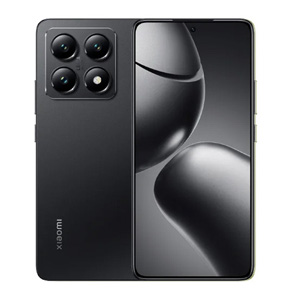
The Xiaomi 14T stands out as one of the best premium midrange phones under 65k, offering a perfect blend of performance, display quality, and battery life. It features a stunning 144Hz AMOLED display with Dolby Vision, HDR10+, and 4000 nits peak brightness, providing vibrant and sharp visuals for media consumption. The performance is driven by the MediaTek Dimensity 8300 Ultra chip, paired with 12GB of RAM and 512GB of storage, delivering a smooth experience in gaming and multitasking. The phone also excels in software with Android 14 and HyperOS 1.0, offering plenty of customization options.
In terms of cameras, the Xiaomi 14T comes with Leica branding and a versatile camera setup, including a 50MP primary, 50MP telephoto, and 12MP ultrawide sensor. While the camera performance is decent, it could benefit from further optimization, particularly in portrait shots. Battery life is impressive with its 5,000mAh cell and 67W fast charging, ensuring long usage and quick top-ups. Overall, the Xiaomi 14T is an excellent option for those looking for a premium midrange device with great all-around performance, although camera enthusiasts might want to consider other options. Meanwhile, you also get a free Buds 6 Lite as part of the 2025 Holi offer!
Specifications
- Display: 6.67″ FHD+ AMOLED, 144Hz refresh rate, HDR10+, 4000 nits (peak)
- Chipset: Dimensity 8300 Ultra (4nm)
- Memory: 12GB LPDDR5X RAM, 512GB internal storage (UFS 4.0)
- Software & UI: Xiaomi HyperOS, Android 14
- Rear Camera: Triple (50MP main, 50MP ultrawide, 12MP telephoto)
- Front Camera: 32MP sensor (punch-hole)
- Security: In-display fingerprint sensor (Optical)
- Connectivity: Wi-Fi 802.11 a/b/g/n/ac/6e, dual-band, Wi-Fi Direct, Bluetooth 5.4, A2DP, LE, GPS, GLONASS, GALILEO, BDS, NFC, USB Type-C, OTG
- Sensors: Accelerometer, Barometer, Gyro, Geomagnetic, Hall, Proximity, Ambient Light
- Battery: 5,000mAh with 67W fast charging
- Price in Nepal (Official): Rs. 64,999 (12/512GB)
- Buy Xiaomi 14T here1
1. iPhone 14
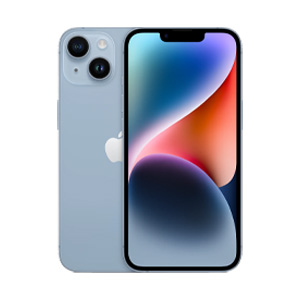
The iPhone 14 is still one of the best premium midrange phones you can buy in Nepal, offering a sleek design with a 6.1-inch Super Retina XDR OLED display that boasts vibrant visuals and a peak brightness of 1200 nits. Powered by the A15 Bionic chip with a 5-core GPU, it delivers impressive performance and is available in three storage options: 128GB, 256GB, and 512GB. The device also offers excellent battery life with up to 20 hours of video playback and supports 15W MagSafe wireless charging.
In terms of camera capabilities, the iPhone 14 features a dual 12MP setup with improved low-light performance through the Photonic Engine and autofocus on the front camera for better selfies. Additionally, the phone includes useful features like Crash Detection and Emergency SOS via Satellite, ensuring user safety in emergencies. With IP68 water and dust resistance, FaceID security, and 5G connectivity, the iPhone 14 provides a premium experience
iPhone 14 Specifications:
- Display: 6.1‑inch (2532 × 1170 pixels) OLED, 460ppi, Super Retina XDR
- Chipset: Six-core A15 Bionic 64-bit processor, 16-core Neural Engine
- Storage: 128/256/512GB
- Operating System: iOS 16
- SIM: Dual SIM (nano + eSIM), dual eSIM
- Back Camera: Dual:
– 12MP wide-angle f/1.5 primary camera, 7-elements lens, sensor-shift OIS, True Tone flash with Slow Sync, 4K Dolby Vision video recording at 60 fps, Cinematic video, Action Mode
– 12MP 120° Ultra Wide f/2.4 camera, 5-elements lens - Front Camera: 12MP front camera with f/1.9 aperture, 1080p video recording, Retina Flash, 4K Dolby Vision HDR recording up to 60 fps, Slo‑mo 1080p at 120 fps, Cinematic video
- Security: TrueDepth camera for FaceID facial recognition
- Connectivity: 5G (sub-6GHz and mmWave) with 4 x 4 MIMO, Gigabit LTE with 4×4 MIMO and LAA, 802.11ax Wi‑Fi 6 with 2×2 MIMO, Bluetooth 5.3, NFC, GPS with, GLONASS, Galileo, QZSS, and Beidou
- Other features: Water and dust resistance (IP68), Stereo speakers
- Battery: Up to 20 hours of video playback, 7.5W Qi Wireless Charging, 15W MagSafe Wireless Charger (No adapter included in the box)
- Read the full specs of the iPhone 14 here
- Buy iPhone 14 here
Best Flagship under 1.5 Lakhs
4. Honor Magic 6 Pro
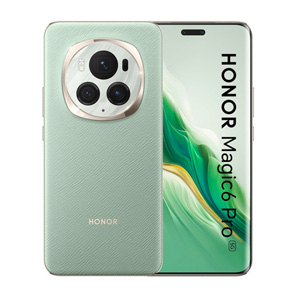
The Honor Magic 6 Pro stands out as one of the best flagship phones under 150k, offering impressive features and performance. With a sleek glass and metal design, an IP68 rating, and a 6.80-inch OLED panel with LTPO, it delivers vibrant colors and a smooth experience. The display also supports HDR10+ and Dolby Vision, ensuring top-tier visual quality. Powered by the Snapdragon 8 Gen 3, this phone handles multitasking, gaming, and demanding apps with ease. The 12GB RAM and 512GB storage ensure ample space for your files and smooth performance.
The camera system on the Magic 6 Pro is a major highlight. The 50MP main sensor with OIS captures detailed and sharp photos, while the 50MP ultrawide offers stunning wide-angle shots. The 180MP periscope telephoto lens provides excellent zoom capabilities, including 2.5X optical and up to 100X digital zoom. The front camera, combining a 50MP lens with a 3D depth sensor, ensures clear, crisp selfies with great depth effects. Whether you’re shooting portraits or capturing landscapes, the Magic 6 Pro excels across various photography scenarios.
Battery life is another strong point, with a 5600mAh capacity that supports 80W wired and 66W wireless charging, ensuring you stay powered throughout the day. Connectivity options include 5G, Wi-Fi 7, and Bluetooth 5.3, ensuring fast and reliable connections. The phone also features advanced security with a fingerprint scanner and 3D face recognition. Running MagicOS 8 based on Android 14, the Magic 6 Pro offers a refined software experience, making it a top contender in the flagship space for its price.
| Honor Magic 6 Pro | |
| Material | Glass back/front, Metal chassis |
| Display | 6.80-inch OLED Panel, LTPO, 120Hz Refresh rate, HDR10+, Dolby Vision, 4320Hz PWM dimming |
| IP rating | IP68 |
| Processor | Snapdragon 8 Gen 3 (4nm) |
| Camera |
|
| Front Camera | 50MP + 3D depth camera |
| Memory Configuration | 12/512B |
| Battery | 5600mAh, 80W Fast Charging, 66W Wireless Charging |
| Connectivity | 5G, Wi-Fi 7, Bluetooth 5.3, NFC, GPS, Satellite Connectivity |
| Security | Fingerprint, 3D Face Scanner |
| OS | MagicOS 8 based on Android 14 |
3. Xiaomi 15 Ultra

The Xiaomi 15 Ultra is a flagship powerhouse, especially for photography enthusiasts. The standout feature is the 200MP periscope camera, offering 4.3x zoom and low-light performance. Paired with three 50MP sensors for wide, telephoto, and ultrawide shots, this camera system is perfect for all kinds of photography. The main camera now has a fixed f/1.63 aperture, improving consistency in image quality. Xiaomi has also introduced the third-generation Photography Kit, including a red camera grip and an additional 2,000mAh battery for extended shooting capabilities. If you’re into mobile photography, this phone delivers top-tier performance.
Design-wise, the Xiaomi 15 Ultra has a premium build with an aluminum frame and a 6.73-inch WQHD+ AMOLED display. With a 120Hz refresh rate and HDR10+ support, the phone is also rated IP68 for water and dust resistance and features Gorilla Glass 7i protection. The quad-camera module, while large, adds a bold design element that signals the phone’s camera prowess.
Under the hood, the Xiaomi 15 Ultra packs the Snapdragon 8 Elite processor, offering significant power for demanding tasks. Whether you’re gaming, multitasking, or using AI-driven features like object removal and real-time translation, the phone handles it with ease. The 12GB/16GB RAM and fast UFS 4.0 storage is paired with the 5,410mAh battery supports 90W wired and 80W wireless charging, with reverse wireless charging as well. Running on Xiaomi HyperOS 2.0 based on Android 15, the device also includes future-proof features like Wi-Fi 7 and Bluetooth 6.0.
Specifications
- Display: 6.73-inch WQHD+ AMOLED, 120Hz refresh rate
- Processor: Snapdragon 8 Elite, 3nm process
- Rear Cameras: 50MP (wide) + 50MP (telephoto) + 200MP (periscope) + 50MP (ultrawide)
- Front Camera: 32MP
- Memory: 12G/16GB
- Storage: 256GB/512GB
- Battery: 5410mAh, 90W wired, 80W wireless charging
- Software: Xiaomi HyperOS 2.0 (Android 15)
- Connectivity: WiFi 7, Bluetooth 6.0, NFC, USB-C 3.2 Gen 1
2. OnePlus 13
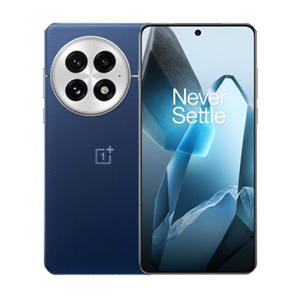
The OnePlus 13 brings a significant design overhaul, with improvements like IP68/IP69 water and dust resistance, Ceramic Guard Glass for better protection, and a more secure ultrasonic fingerprint sensor. The device feels comfortable in hand, thanks to its back curves and lightweight design. Additionally, OnePlus has introduced microfiber vegan leather on the back, providing a premium feel. The display impresses with a color-accurate A+ rating from Display Mate, offering HDR support, high PWM dimming, and great touch response. It also performs well in wet conditions, thanks to the second-gen Aqua Touch feature.
Performance-wise, the OnePlus 13 is powered by the Snapdragon 8 Elite chip, paired with an optimized UI that makes the device the fastest in 2025. Gaming and multitasking are seamless, and the AI features are intuitive, offering tools like AI Eraser and AI Summary. The phone is also equipped with an extensive vapor chamber cooling system, preventing overheating even during intensive tasks. The 6000mAh battery, combined with a 100W charger, provides excellent endurance, offering up to 10 hours of screen-on time and charging from 0 to 100% in just 35 minutes.
On the camera front, the OnePlus 13 has received notable improvements. The 3X periscope lens, now with a Sony sensor, offers impressive results for portraits and zoom shots. Daylight photos are well-optimized, and the ultra-wide shots have solid details. However, low-light color accuracy remains inconsistent, and the absence of a dedicated 6X lens limits zoom capabilities. Video recording is decent, though it struggles in ultra-wide low-light conditions. Despite these camera limitations, the OnePlus 13 remains a strong contender in the flagship market, offering great value for money with its overall performance and features.
OnePlus 13 Specifications:
- Display: 6.82-inch BOE X2 OLED, 8T LTPO, 1-120Hz, Dolby Vision, 2160Hz PWM dimming
- Resolution: QHD+ 2K (3168 x 1440 pixels)
- SoC: Snapdragon 8 Elite (3nm)
- OS: OxygenOS 15 based on Android 15
- Memory: Up to 24GB LPDDR5X RAM, 1TB UFS 4.0 storage
- Rear Camera: Triple
- 50MP Sony LYT-808 primary, 23mm equivalent, ƒ/1.6, OIS, PDAF
- 50MP Samsung JN5 ultrawide, 15mm equivalent, ƒ/2.2, AF
- 50MP Sony LYT 600 Telephoto, 73mm equivalent, 3x Optical zoom, 120x Digital zoom, ƒ/2.6, OIS, AF
- Selfie: 32MP, ƒ/2.4
- Battery: 6000mAh Silicon Carbide cell
- Charging: 100W wired, 50W wireless, 10W wireless reversed
- Biometric: Fingerprint (ultrasonic), Face Unlock (2D)
- Check the full specifications of OnePlus 13 here
1. Samsung Galaxy S25/ S25 Plus

The Galaxy S25 and S25 Plus offer strong value under 1.5 Lakh rupees, with impressive performance, a fantastic display, and excellent battery life. They provide a great balance of features that make them worth the premium over the standard S25, though the price still remains high. The design, while refined and classic, feels a bit stale compared to rivals, and a refresh would be appreciated. Despite this, the color options this year are a nice touch, and the phones remain solid in terms of looks.
The display is one of the strongest features, offering vibrant colors and brightness that work well even in bright sunlight. It’s one of the best screens you’ll find on any phone, though the fingerprint scanner could be more responsive. The software is where the S25 series falters slightly—while One UI has been improved, the increasing bloatware and missing features detract from the experience. The camera, while good, doesn’t compete with others in the market that have better sensors and more advanced features, indicating the need for an Ultra-level upgrade in the future.
In terms of performance, the Galaxy S25 Plus is hard to beat, boasting the latest Snapdragon chipset, and it’s the fastest phone in benchmark tests. Real-world differences, however, may not be as noticeable. The battery life is solid, but competitors like the OnePlus 13 offer better endurance and faster charging, which puts Samsung at a disadvantage. Overall, while the S25 Plus is an excellent device, it’s clear that Samsung needs to catch up in some areas to remain competitive.
Samsung Galaxy S25 / S25+ Specifications
- Display: 6.2-inch/ 6.7-inch 1440p+ LTPO OLED, 1-120Hz refresh rate
- Color options: Navy, Silver Shadow
- Processor: Snapdragon 8 Elite for Galaxy
- Memory: 12GB
- Storage: 256GB, 512GB
- Rear Cameras: 50MP (main), 10MP (telephoto), 12MP (ultrawide)
- Front Camera: 12MP
- Battery: 4000/4,900mAh, 45W wired, 15W wireless
- Build: Armor Aluminum frame, IP68 certified
- Connectivity: 5G, Wi-Fi 7, Bluetooth 5.4
Best Flagship Phones in Nepal
3. Vivo X200 Pro
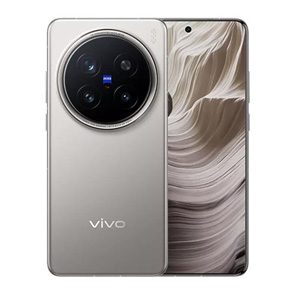
The Vivo X200 Pro is an impressive flagship, especially for its camera performance, marking a significant step forward for Vivo in the premium market. Its 200MP periscope lens offers fantastic flexibility for portrait shots and macro photos. At 3.7x zoom, it’s ideal for portraits without sacrificing detail, and the 135mm (6x) zoom level still maintains incredible sharpness. The camera’s edge detection and bokeh quality are outstanding, producing social media-ready shots without the need for editing. Thanks to Vivo’s long-standing collaboration with Zeiss, the camera shines, particularly in portrait mode. The 50MP primary lens delivers excellent dynamic range, even in challenging conditions, and handles low-light shots with impressive clarity.
While the ultrawide camera hasn’t seen improvements from the previous model, the rest of the camera system makes up for it. Vivo’s videography has also improved, offering 4K 60fps on all cameras, including the front-facing 32MP sensor. The phone can shoot 10-bit Log videos, 4K 120fps slow-motion videos, and portrait videos, making it a versatile tool for any photographer or content creator. If you’re into smartphone photography, the Vivo X200 Pro’s camera performance rivals flagship models from Apple and Samsung, especially in portrait and macro shots.
Beyond the camera, the X200 Pro offers great build quality with IP68 and IP69 ratings, ensuring durability against water and dust. It features a large 6.78-inch AMOLED display with vibrant colors and a 120Hz refresh rate, making for a smooth user experience. Powered by the MediaTek Dimensity 9400, the device performs seamlessly, whether gaming or multitasking, and comes with 16GB of RAM and 512GB of storage. Its 6,000mAh battery supports fast 90W charging, getting you from 0 to 75% in just 32 minutes, ensuring all-day battery life.
Vivo X200 Pro review: Specifications
- Design and Build: 162.36 x 75.95 x 8.20 – 8.49 mm, 223 – 228 gm, IP68 + IP69 rating
- Display: 6.78-inch AMOLED panel, 1.5K resolution, 120Hz refresh rate
- Chipset: MediaTek Dimensity 9400 5G (3nm mobile platform)
- Memory: 16GB LPDDR5X RAM, 512GB UFS 4.0 storage (non-expandable)
- Software & UI: Android 15 with Vivo Funtouch OS 15.0 on top
- Rear cameras: Triple (50MP primary, 50MP ultrawide, 200MP periscope)
- Front camera: 32MP sensor (hole-punch)
- Security: Fingerprint sensor (ultrasonic in-display)
- Connectivity: Dual-SIM (Nano), WiFi 7, Bluetooth 5.4, USB-C, NFC, 5G
- Sensors: Accelerometer, Ambient light, Color temperature, E-compass, Flicker, Gyroscope, Infrared, Laser focusing, Multispectral, Proximity
- Battery: 6,000 mAh with 90W fast charging (90W power adapter inside the box)
- Price in Nepal: NPR
184,999174,999 (16/512GB) - Check the full specifications of Vivo X200 Pro here
2. iPhone 16 Pro and iPhone 16 Pro Max
Securing the second position on our roster of premier smartphones in Nepal are Apple’s iPhone 16 Pro and iPhone 16 Pro Max. If you’re seeking the epitome of Apple’s smartphone prowess, these two models are the ones to opt for. However, while the distinction between Apple’s “Pro” and “Pro Max” iPhones has traditionally revolved around their physical dimensions and battery longevity, this time around, opting for the iPhone 16 Pro Max might be the choice if you’re in pursuit of nothing short of the absolute best with a super large display and very good battery life.
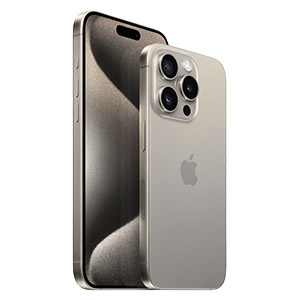
This year, the 5X telephoto lens is present on the Pro variant as well, so, you are not missing much, if you opt for the Pro model. So these siblings are portrait photography ready, with their 120mm lens facilitating the capture of remarkable portraits with superior subject clarity, background defocus, and overall image quality.
Nevertheless, it’s important to acknowledge the challenges inherent in capturing 5x portraits, as it often requires maintaining a considerable distance from the subject. Beyond this, the new 48MP ultra-wide camera clicks marginally better photos and macros. Additionally, they excel in video recording capabilities, solidifying their position as the top choice for smartphone videography. And the 4K 120fps option is a cherry on top, this year.
Titanium Frame and Extra Buttons
The iPhone 16 Pro Series brings in the Titanium frame build, ensuring sturdiness, this year as well. is undoubtedly their titanium frame. What’s new this time is a dedicated camera button on the right side. It allows you to change color tone, zoom, and aperture but in our tests, this button felt like more of a gimmick. The onscreen controls are far easier to work with. In particular, we ended up getting blurry and not-so-sharp outputs as the phone tends to shake while clicking the button. Besides this, the Action button is the same as last year.
In terms of performance, the iPhone 16 Pro models are powered by the brand-new A18 Pro processor. It is complemented by a larger graphite sheet and it works fantastically with the phone staying cooler than the last gen iPhone 15 Pro Max.
With features ranging from hardware ray tracing to a MetalFX Upscaling method reminiscent of DLSS, this “Pro” chip lives up to its name. It’s not just about gaming prowess either; these devices also embrace USB-C connectivity and boast impressive battery life.
iPhone 16 Pro and iPhone 16 Pro Max Specifications:
- Display: 120Hz refresh rate, Ceramic Shield glass, HDR 10, Dolby Vision
- iPhone 16 Pro: 6.3-inches OLED screen, FHD+
- iPhone 16 Pro Max: 6.7-inches OLED screen, 2K
- Chipset: Apple A18 Pro (3nm mobile platform)
- Memory: 8GB RAM, 128GB to 1TB storage (fixed)
- Software & UI: Apple iOS 18 Pro (upgradeable)
- Rear Camera: Triple (48MP primary, 48MP ultrawide, 12MP telephoto)
- Front Camera: 12MP sensor (notch)
- Security: Face ID (from TrueDepth camera)
- Connectivity: Dual-SIM (Nano / eSIM), WiFi 7, Bluetooth 5.3, GPS / AGPS / Glonass / Galileo / QZSS / Beidou / NavIC / iBeacon, UWB, USB-C, 4G LTE, 5G
- Sensors: Barometer, Dual ambient light, High-g accelerometer, High dynamic range gyro, LiDAR, Proximity
- Battery: (power adapter not provided)
- iPhone 16 Pro: 3355mAh with 30W wired and 15W wireless charging
- iPhone 16 Pro Max: 4676mAh with 30W wired and 25W wireless charging
- Read our iPhone 16 Pro Max review
- Watch our iPhone 16 Pro Max review
- Price in Nepal:
- iPhone 16 Pro (Expected): NPR 180,999 (128GB) / NPR 1897,999 (256GB) / NPR 233,999 (512GB) / NPR 269,999 (1TB)
- iPhone 16 Pro Max (Expected): NPR 215,999 (256GB) / NPR 251,999 (512GB) / NPR 287,999 (1TB)
1. Samsung Galaxy S25 Ultra
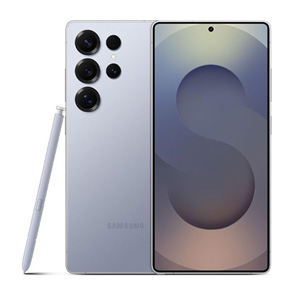
The Samsung Galaxy S25 Ultra is undoubtedly the best phone available in Nepal right now. It features the latest Snapdragon 8 Elite chipset paired with 12GB or 16GB of RAM, delivering exceptional performance across gaming, multitasking, and everyday use. The 6.9-inch Dynamic AMOLED 2X display offers an immersive experience with a 120Hz refresh rate and peak brightness of 2600 nits, making it perfect for media consumption and gaming. The camera system, with its 200MP main sensor and enhanced low-light performance, delivers stunning photos, while the 5000mAh battery ensures long-lasting usage, supported by 45W fast charging.
With One UI 7 software enhancements, the S25 Ultra offers a smooth and intuitive experience, receiving up to 7 years of software updates. Despite the incremental hardware improvements over its predecessor, the S25 Ultra stands out with its top-tier camera, performance, and display. For anyone in Nepal looking for the ultimate smartphone experience, the Samsung Galaxy S25 Ultra offers unmatched value, making it the top choice in the market.
Samsung Galaxy S25 Ultra Specifications:
- Display: 6.9″ QHD+ 120Hz (LTPO, 1-120Hz)
- Processor: Snapdragon 8 Elite for Galaxy
- RAM: 12GB/16GB LPDDR5X
- Storage: 256GB/512GB/1TB (UFS 4.0)
- Cameras:
- Rear: 200MP (Wide), 50MP (Telephoto 5x), 10MP (Telephoto 3x), 50MP (Ultrawide)
- Front: 12MP (Wide)
- Battery: 5000mAh with 45W wired, 15W wireless, 4.5W reverse wireless
- Software: One UI 7 (7 years of updates)
- Colors: Titanium Black, Titanium Gray, Titanium Silver Blue, Titanium White Silver
- Check the full specifications of Samsung Galaxy S25 Ultra here
Best Phone in Nepal: Conclusion
Best phone in Nepal list is subject to change anytime. New launches and rice drops are the key factors for change here. But fear not, we’ll make sure to update this article constantly if any changes happen. Apart from that, the price of Mobile in Nepal differs from one smartphone brand to another. Some brands may offer better smartphones with better specs at cheaper prices than others. So, one must explore different models available at similar price segments, do proper market research, and then proceed to buy a smartphone. For that, you can always count on our buy guides articles and YouTube videos as well.
- Check out the other buy guides for smartphones.







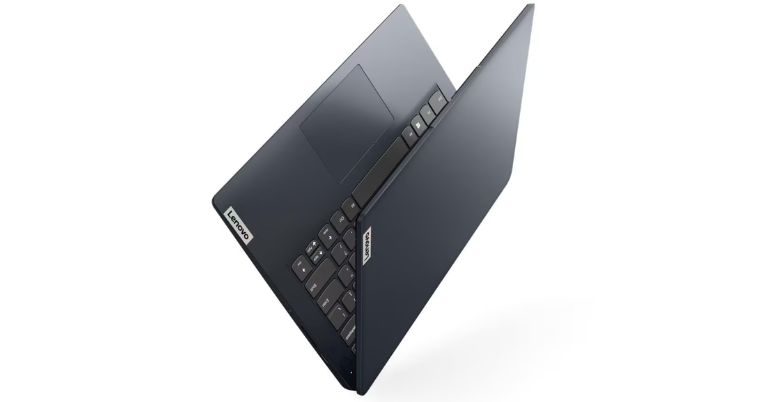
![Best Gaming Laptops in Nepal Under Rs. 250,000 (रु 2.5 Lakhs) [2025] Best Gaming Laptops Under 2.5 lakhs in Nepal [Feb 2025 Update]](https://cdn.gadgetbytenepal.com/wp-content/uploads/2025/02/Best-Gaming-Laptops-Under-2.5-lakhs-in-Nepal-Feb-2025-Update.jpg)
![Best Gaming Laptops in Nepal Under Rs. 120,000 (रु 1.2 Lakhs) [2025] Best Budget Gaming Laptops Under Rs 120000 in Nepal 2025 Update](https://cdn.gadgetbytenepal.com/wp-content/uploads/2025/05/Best-Budget-Gaming-Laptops-Under-Rs-120000-in-Nepal-2024-Update.jpg)
![Best Laptops Under Rs. 80,000 in Nepal [2025] Best Laptops Under 80,000 in Nepal March 2025 Update](https://cdn.gadgetbytenepal.com/wp-content/uploads/2025/03/Best-Laptops-Under-80000-in-Nepal-March-2025-Update.jpg)
![Best Laptops Under Rs. 70,000 in Nepal [2025] Best Laptops Under 70,000 in Nepal March 2025 Update](https://cdn.gadgetbytenepal.com/wp-content/uploads/2025/01/Best-Laptops-Under-70000-in-Nepal-March-2025-Update.jpg)
![Best Mobile Phones Under Rs. 15,000 in Nepal [Updated 2025] Best Phones Under 15000 in Nepal 2024 Budget Smartphones Cheap Affordable](https://cdn.gadgetbytenepal.com/wp-content/uploads/2024/03/Best-Phones-Under-15000-in-Nepal-2024.jpg)
![Best Mobile Phones Under Rs. 20,000 in Nepal [Updated] Best Mobile Phones Under NPR 20000 in Nepal 2023 Updated Samsung Xiaomi Redmi POCO Realme Narzo Benco](https://cdn.gadgetbytenepal.com/wp-content/uploads/2024/01/Best-Phones-Under-20000-in-Nepal-2024.jpg)
![Best Mobile Phones Under Rs. 30,000 in Nepal [Updated 2025] Best Phones Under 30000 in Nepal](https://cdn.gadgetbytenepal.com/wp-content/uploads/2025/01/Best-Phones-Under-30000-in-Nepal.jpg)
![Best Mobile Phones Under Rs. 40,000 in Nepal [Updated 2025] Best Phones Under 40000 in Nepal 2024 Smartphones Mobile Midrange](https://cdn.gadgetbytenepal.com/wp-content/uploads/2024/02/Best-Phones-Under-40000-in-Nepal-2024.jpg)
![Best Mobile Phones Under Rs. 50,000 in Nepal [Updated 2025] Best Phones Under 50000 in Nepal](https://cdn.gadgetbytenepal.com/wp-content/uploads/2025/01/Best-Phones-Under-50000-in-Nepal.jpg)
![Best Flagship Smartphones To Buy In Nepal [Updated] Best flagship phone 2025](https://cdn.gadgetbytenepal.com/wp-content/uploads/2024/07/Best-Flagship-Phones-who-is-it-ft-1.jpg)